Generate .http files from OpenAPI specifications
For a quite some time now, when building HTTP based API, I have been Swagger UI for local API endpoint testing. Lately, I’ve been working on projects with rather large response payloads and Swagger UI gets really slow with this. I didn’t take long before I completely swapped out using Swagger UI and went over to using .http files.
.http files were made popular by the Visual Studio Code extension REST Client, which then was adopted in JetBrains IDE’s, and later on Visual Studio 2022 as an extension. Eventually, the 3rd party extension, REST Client, got baked into Visual Studio 2022 version 17.6 (or later) with the ASP.NET and Web Development workload installed.
The contents of a .http file contains the verb, path, headers, and the request body. It looks something like this:
### POST /pet Request
POST https://petstore.swagger.io/v2/pet
Content-Type: application/json
{
"id": 0,
"category": {
"id": 0,
"name": "name"
},
"name": "name",
"photoUrls": [
""
],
"tags": [
{
"id": 0,
"name": "name"
}
],
"status": "available"
}
A single .http file may contain multiple requests, but I found it more convenient if each endpoint has its own .http file. This is a personal preference and I’m in no way saying that this is the correct or best way to use .http files.
Most, if not all, ASP.NET API projects will expose a Swagger spec or more correctly, an OpenAPI specifications document. This lead me to take advantage of my knowledge and experience of OpenAPI specifications and with authoring code generators to create the tool HTTP File Generator.
HTTP File Generator is distributed as a .NET Tool via NuGet.org.
To install, simply use the following command
dotnet tool install --global httpgenerator
This command line tool allows me to generate a set of .http files from an OpenAPI specifications document (locally and from a URL).
USAGE:
httpgenerator [URL or input file] [OPTIONS]
EXAMPLES:
httpgenerator ./openapi.json
httpgenerator ./openapi.json --output ./
httpgenerator https://petstore.swagger.io/v2/swagger.json
httpgenerator https://petstore3.swagger.io/api/v3/openapi.json --base-url https://petstore3.swagger.io
httpgenerator ./openapi.json --authorization-header Bearer eyJhbGciOiJIUzI1NiIsInR5cCI6IkpXVCJ9.eyJzdWIiOiIxMjM0NTY3ODkwIiwibmFtZSI6IkpvaG4gRG9lIiwiaWF0IjoxNTE2MjM5MDIyfQ.SflKxwRJSMeKKF2QT4fwpMeJf36POk6yJV_adQssw5c
ARGUMENTS:
[URL or input file] URL or file path to OpenAPI Specification file
OPTIONS:
DEFAULT
-h, --help Prints help information
-o, --output <OUTPUT> ./ Output directory
--no-logging Don't log errors or collect telemetry
--skip-validation Skip validation of OpenAPI Specification file
--authorization-header <HEADER> Authorization header to use for all requests
--content-type <CONTENT-TYPE> application/json Default Content-Type header to use for all requests
--base-url <BASE-URL> Default Base URL to use for all requests. Use this if the OpenAPI spec doesn't explicitly specify a server URL
An example usage would be something like this:
httpgenerator https://petstore.swagger.io/v2/swagger.json
which outputs the following:
HTTP File Generator v0.1.1
Support key: mbmbqvd
OpenAPI statistics:
- Path Items: 14
- Operations: 20
- Parameters: 14
- Request Bodies: 9
- Responses: 20
- Links: 0
- Callbacks: 0
- Schemas: 67
Files: 20
Duration: 00:00:02.3089450
and produces the following files:
-rw-r--r-- 1 christian staff 299 Nov 13 22:40 AddPet.http
-rw-r--r-- 1 christian staff 276 Nov 13 22:40 CreateUser.http
-rw-r--r-- 1 christian staff 332 Nov 13 22:40 CreateUsersWithArrayInput.http
-rw-r--r-- 1 christian staff 330 Nov 13 22:40 CreateUsersWithListInput.http
-rw-r--r-- 1 christian staff 135 Nov 13 22:40 DeleteOrder.http
-rw-r--r-- 1 christian staff 115 Nov 13 22:40 DeletePet.http
-rw-r--r-- 1 christian staff 123 Nov 13 22:40 DeleteUser.http
-rw-r--r-- 1 christian staff 119 Nov 13 22:40 FindPetsByStatus.http
-rw-r--r-- 1 christian staff 115 Nov 13 22:40 FindPetsByTags.http
-rw-r--r-- 1 christian staff 117 Nov 13 22:40 GetInventory.http
-rw-r--r-- 1 christian staff 129 Nov 13 22:40 GetOrderById.http
-rw-r--r-- 1 christian staff 109 Nov 13 22:40 GetPetById.http
-rw-r--r-- 1 christian staff 117 Nov 13 22:40 GetUserByName.http
-rw-r--r-- 1 christian staff 107 Nov 13 22:40 LoginUser.http
-rw-r--r-- 1 christian staff 109 Nov 13 22:40 LogoutUser.http
-rw-r--r-- 1 christian staff 250 Nov 13 22:40 PlaceOrder.http
-rw-r--r-- 1 christian staff 297 Nov 13 22:40 UpdatePet.http
-rw-r--r-- 1 christian staff 111 Nov 13 22:40 UpdatePetWithForm.http
-rw-r--r-- 1 christian staff 296 Nov 13 22:40 UpdateUser.http
-rw-r--r-- 1 christian staff 135 Nov 13 22:40 UploadFile.http
For me, .http files seems to be the way going forward.
There are of course a few challenges in adopting this in my daily workflows. Swagger UI has Authentication and Authorization built-in and is extremely easy to implement and enable. In fact, enabling security is the first thing I do when I setup a new API project.
With the tool HTTP File Generator, adding Authorization headers to a .http file is trivial, as you can just specify it from the tool like this:
httpgenerator ./openapi.json --authorization-header Bearer eyJhbGciOiJIUzI1NiIsInR5cCI6IkpXVCJ9.eyJzdWIiOiIxMjM0NTY3ODkwIiwibmFtZSI6IkpvaG4gRG9lIiwiaWF0IjoxNTE2MjM5MDIyfQ.SflKxwRJSMeKKF2QT4fwpMeJf36POk6yJV_adQssw5c
which will generate .http files that look something like this:
### POST /pet Request
POST https://petstore.swagger.io/v2/pet
Content-Type: application/json
Authorization: Bearer eyJhbGciOiJIUzI1NiIsInR5cCI6IkpXVCJ9.eyJzdWIiOiIxMjM0NTY3ODkwIiwibmFtZSI6IkpvaG4gRG9lIiwiaWF0IjoxNTE2MjM5MDIyfQ.SflKxwRJSMeKKF2QT4fwpMeJf36POk6yJV_adQssw5c
{
"id": 0,
"category": {
"id": 0,
"name": "name"
},
"name": "name",
"photoUrls": [
""
],
"tags": [
{
"id": 0,
"name": "name"
}
],
"status": "available"
}
The problem here is that you are not really interested in retrieving or even knowing what Authorization headers your HTTP requests are using. They should just be there if required. These .http files containing Authorization headers should NEVER be committed to source control
Replacing SwaggerUI
I spend all my working hours building software that runs on Microsoft Azure and I extensively use the Azure CLI for various purposes. One of which is for retrieving an access token for the user I’m currently signed in as. With Azure CLI, you can request an access token based on a scope. This works great if your API uses roles that are specified in Microsoft Entra ID.
Here’s an advanced example of generating .http files for a REST API that uses the Microsoft Entra ID service as an STS.
For this example, I use PowerShell and Azure CLI to retrieve an access token for the user I’m currently logged in with then I pipe the access token to HTTP File Generator.
dotnet tool update --global httpgenerator
az account get-access-token --scope [Some Application ID URI]/.default `
| ConvertFrom-Json `
| %{
httpgenerator `
https://localhost:5001/swagger/v1/swagger.json `
--authorization-header ("Bearer " + $_.accessToken) `
--base-url https://localhost:5001 `
--output ./HttpFiles
}
This script is something that I have in all projects and I also configure git to ignore *.http files, since I re-generated them multiple times a day and they always contain Authorization headers. I basically run the script above every time I want to debug or test my API’s and I have pretty much stopped using Swagger UI. In fact, I stay within my IDE of choice entirely while coding, testing, and debugging my API’s.
Using .http files from Visual Studio Code
If you don’t already have the REST Client extension installed then go search for REST Client

Once the REST Client extension installed you should be able to see a Send Request label when openning .http files. Clicking on Send Request will open a tab containing the response
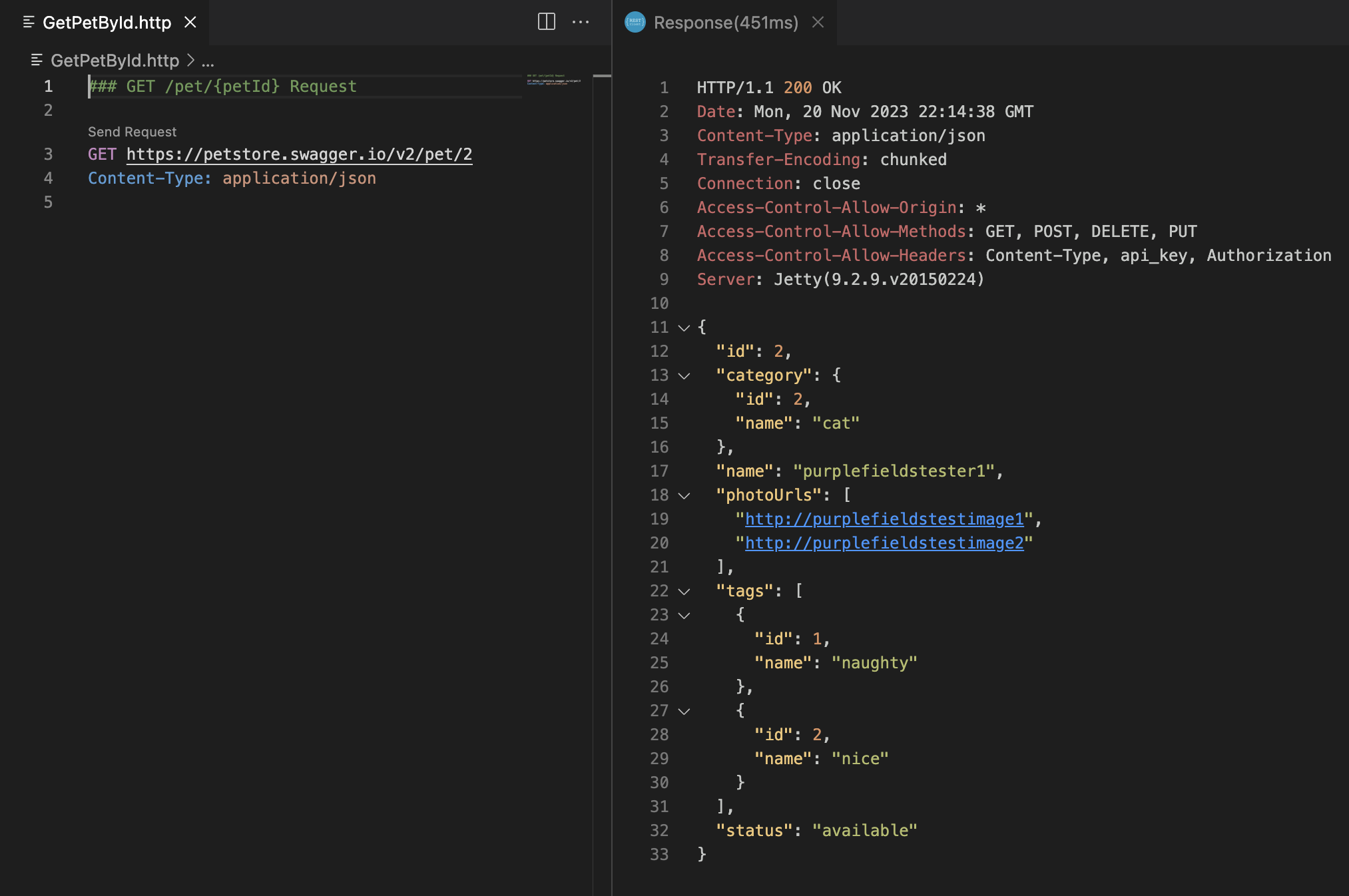
Using .http files from JetBrains Rider
JetBrains IDE’s come with a built-in HTTP Client that supports .http files.
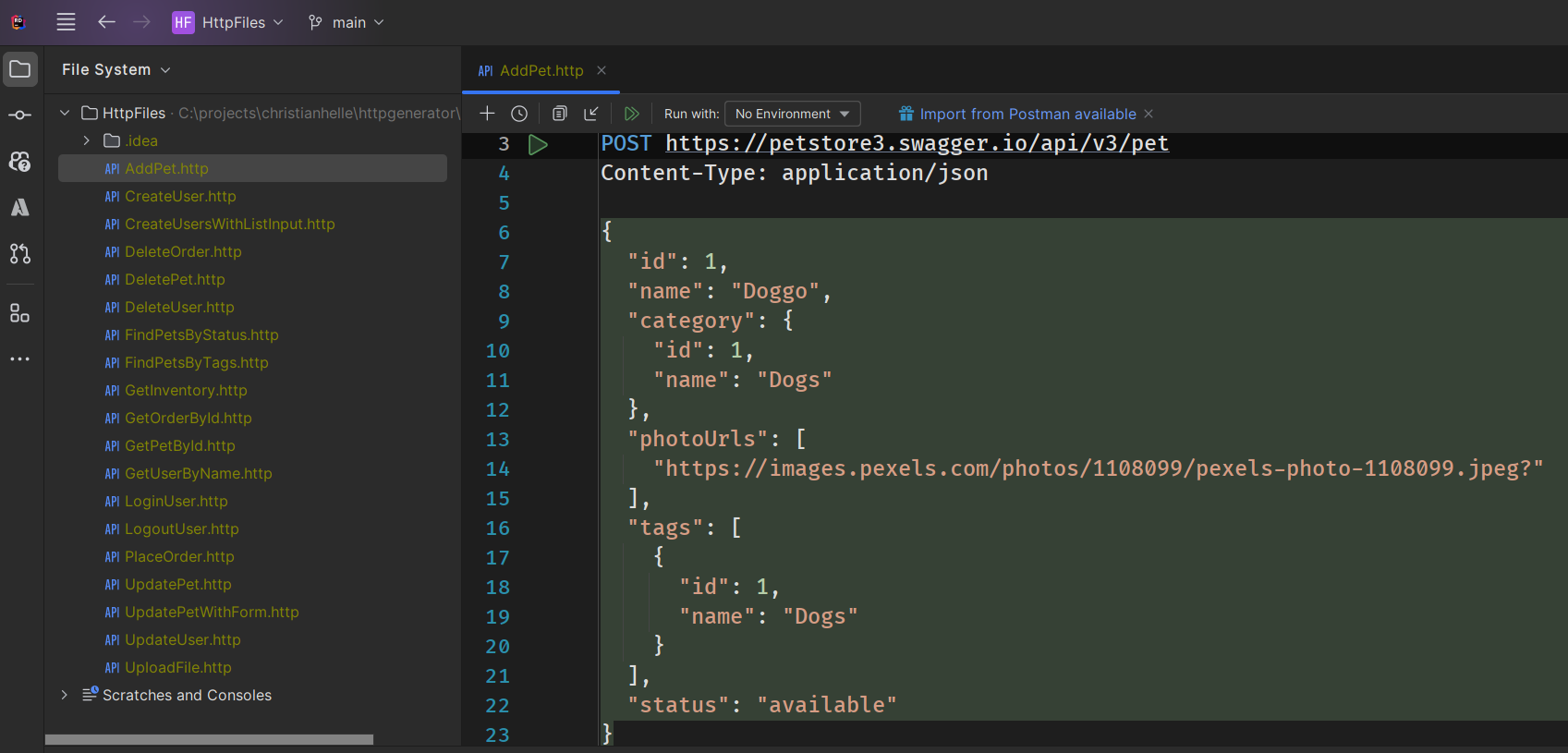
I find that the JetBrains HTTP Client is much smoother than the Visual Studio Code extension, but this is only noticeable when working with very large payloads.
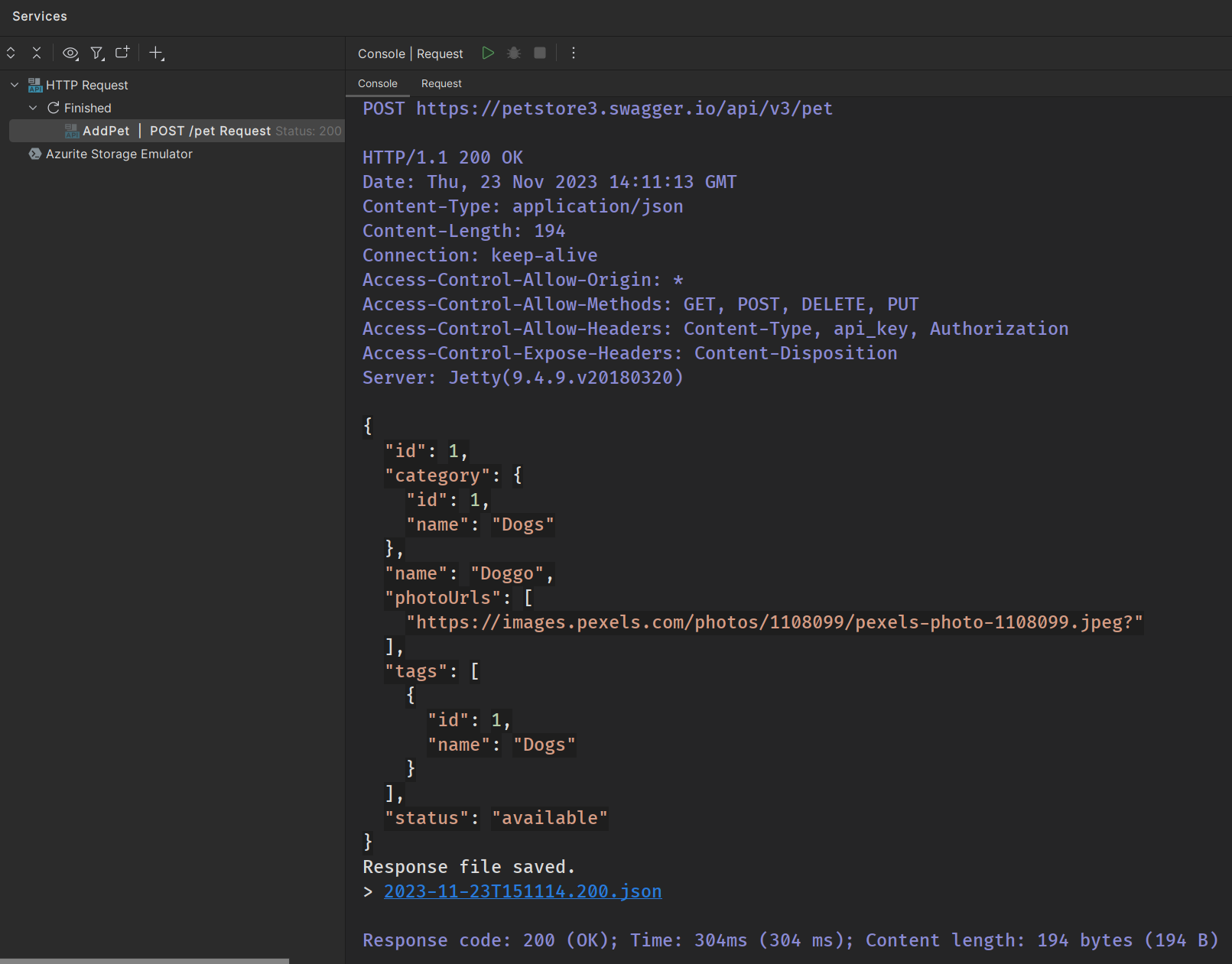
Using .http files from Visual Studio 2022
The newer versions of Visual Studio 2022 (Since 17.6) comes with a built-in HTTP Client that supports .http files. Older versions require the Visual Studio 2022 extension
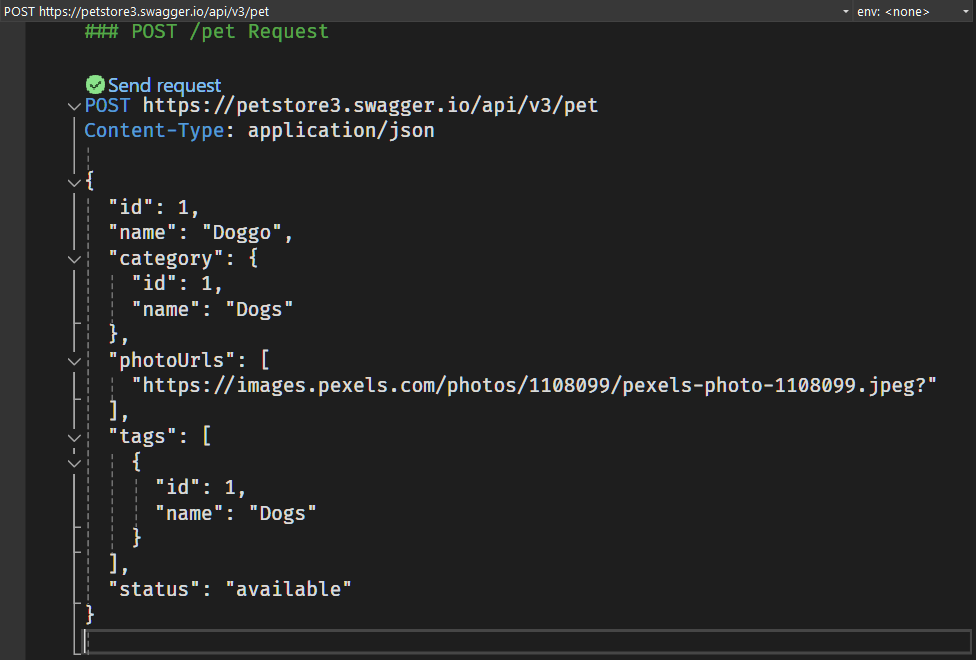
The Visual Studio 2022 unfortunately doesn’t give a very smooth experience. Currently, it’s a little slow but I’m hopeful that this will improve over time.
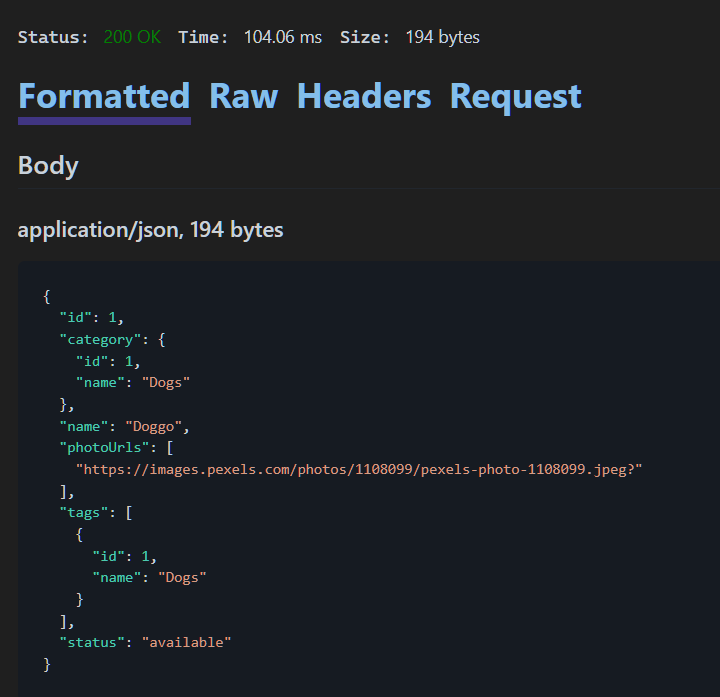
The response is pretty decent and gives you options to view the response headers in tabular form
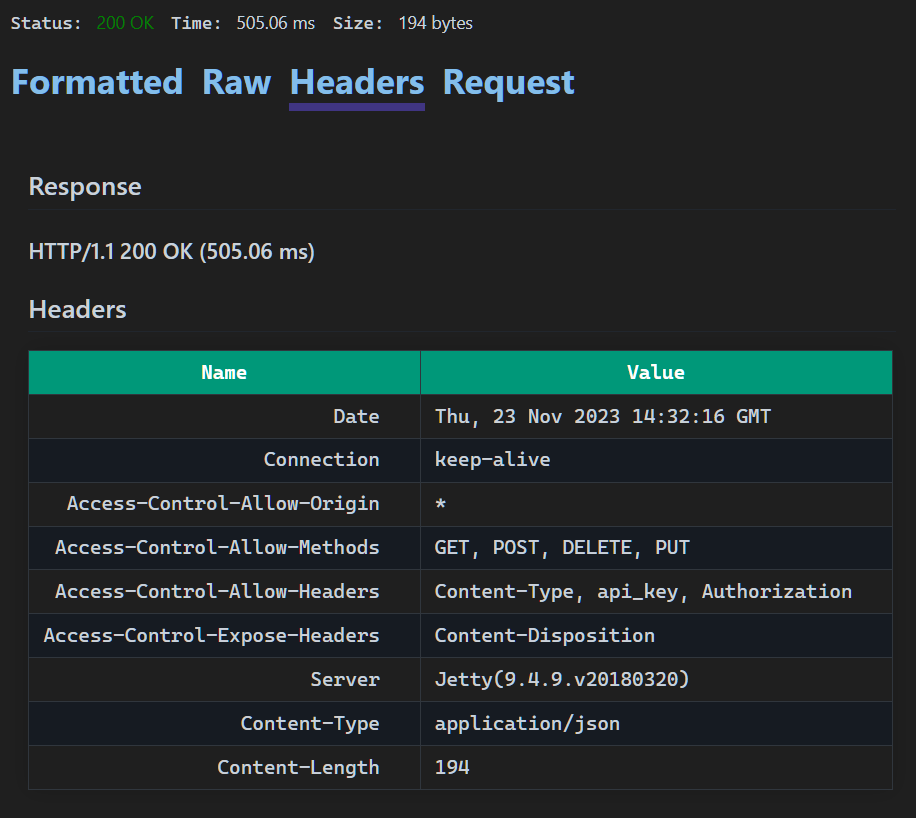
There are some official guidance documentation on how to Use .http files in Visual Studio 2022 from Microsoft Learn